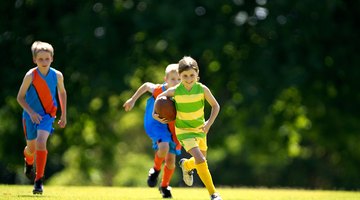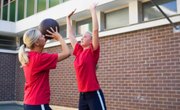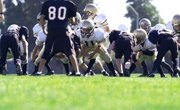The current economic climate has precipitated a reduction in the funding of extracurricular middle school activities. One such vital program that has been threatened by budget cuts is after-school sports activities. However, middle school sports programs provide a valuable function in supporting physical health and social maturation and growth of middle school students. In addition, middle school athletic programs serve as feeder programs to high school athletic programs, facilitating the development of a tradition of individual and team success. Middle school athletic programs may also provide a beneficial, yet serendipitous, answer to after-school childcare.
Physical Benefits
Given the increased emphasis on academic standards and student achievement, the day of a middle schooler is packed with more seat time. That means less time available for activities allowing for movement, such as Physical Education, art, band and chorus. Participation in middle school athletics provides an opportunity for increased caloric expenditure that could have the potential to impact fitness levels. Additionally, the development of sports specific skills -- muscular strength and endurance, flexibility and agility -- are also likely outcomes.
Social Benefits
Participants in middle school sports teams can develop interpersonal and leadership skills and increase their social circles. Middle school athletics provide the opportunity for students to spend time with other students of like interests and varying demographics and develop skills for working in a competitive environment and collaborative effort. Sports teams also provide experiences for developing leadership skills, as members of the group are called upon to rise to leadership positions.
Childcare Benefits
Middle school athletic programs, as a rule, are scheduled to take place immediately following school. Therefore, working parents know that their kids are cared for by professionals with little or no additional financial outlay. Since middle school students cannot self-supervise immediately after school, school-related supervision during the transition from the academic day to the athletic day is provided. Students move safely into the athletic program for which they have registered and are supervised until parents arrive to pick them up.
Program Benefits
High school athletic programs are more successful when upcoming ninth graders have already been exposed to activity appropriate skills. High school sports programs that do not have the benefit of a designated feeder program are at a distinct disadvantage. For instance, if the upcoming freshman basketball players have not been exposed to basic basketball skills, much of the afternoon practice will be devoted to teaching fundamentals rather than refining existing skills and covering complex offensive or defensive strategies.
Related Articles
References
Writer Bio
Katherine Bradley began writing in 2006. Her education and leadership articles have been published on Education.com, Montessori Leadership Online and the Georgia Educational Researcher. Bradley completed a Ph.D. in educational leadership from Mercer University in 2009.











